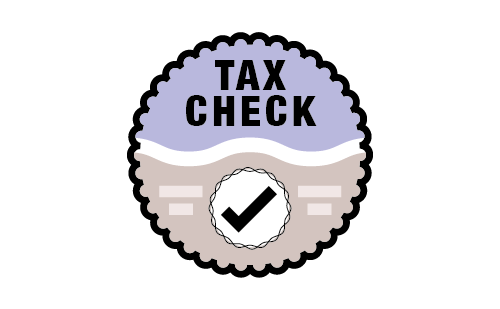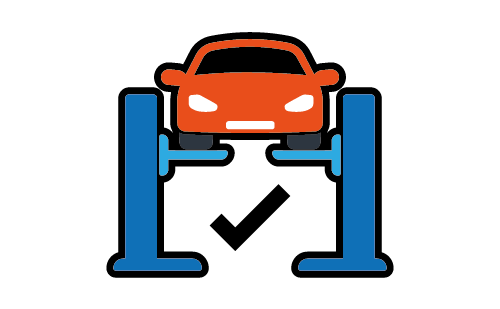Number plate check
Enter any UK reg number into our FREE number plate checker to learn more about the vehicle.



What information can you get from a UK number plate?
What’s more, if you run the vehicle’s plate number through our reg plate checker, we can provide you with the following information in an instant:
-
Year and registration date.
-
Make, model, colour, fuel and transmission type.
-
Engine size (cc), power (kw) and CO2 (g/km).
-
Whether the vehicle is imported.
-
The number of previous keepers – and the date ownership was transferred to the current keeper.
-
Tax status, tax due date and MOT history.
Frequently asked questions
Yes, our number plate check tool can provide key information for any UK registration number - including private (personalised) number plates.
You should be able to find your car's reg number on the number plates attached to the front and rear of the vehicle. The registration number will also be recorded in the vehicle's V5C logbook.
If you are thinking about buying a used car, we would recommend making a note of the registration number and running it through our licence plate check tool. This will help to ensure everything meets with your expectations.
If you have purchased a private number plate, you will be given a V750 document (a certificate of entitlement), which confirms your ownership of that specific registration number. You will need this document when assigning your newly-purchased reg number.
You can assign a private number to your vehicle online via the DVLA website. There is no fee for this service and the process should only take a few minutes. However, you must ensure that you hold a valid V750 document prior to requesting a change to a private reg number.
If your application is accepted, you will receive a confirmation email from the DVLA with a number plate authorisation certificate (eV958). At this stage, if you have plates with your new registration number, you should have these fitted to your vehicle as soon as possible.
If you do not yet have your new plates, you can order them from a DVLA-approved number plate supplier, using your V750 or eV958 certificate as confirmation.
In some cases, you will receive an error message during your online application, which may read:
“This registration number cannot be assigned.” or “We need to look into your application further due to your vehicle’s licensing history.”
If this happens, you will need to apply by post. To do this, send your completed V750 form – and the vehicle’s logbook (V5C) or, the green ‘new keeper’ slip with a completed V62 application for a V5C logbook to the following address:
DVLA Personalised Registrations, Swansea, SA99 1DS
Whether you have applied to change your number plate online or by post, you should receive a new V5C logbook in the post, with your vehicle’s updated details within 4-6 weeks. However, you can use your new plates as soon as your application has been approved.
You should notify your insurance company before you drive with your new plates. If you fail to do so, your insurance may not be valid. Furthermore, you should update any accounts that utilise your old registration number (e.g. accounts you use to make Congestion Charge or ULEZ (Ultra-low Emission Zone) payments for your vehicle).
If you choose to change your registration number online, the process is usually instantaneous. However, if you change your reg number by post, you'll typically have to wait between two and five weeks for the transfer to complete.
By failing to display your number plates or displaying invalid number plates whilst driving you could receive a fine of up to £1,000.
You should display a white number plate at the front of your vehicle and a yellow plate at the back. Both plates should be made from a reflective material without a background pattern.
Your number plates may be deemed invalid if the characters are rearranged, the letters are incorrectly spaced or printed in a way that makes them difficult to read. According to the DVLA, there must be an 11mm space between each character, 33mm between the two groups of characters – and 19mm between the vertical lines. Any plate that deviates from this format is illegal.
UK number plates should also be marked with the name of the number plate supplier – and ‘BS AU 145E’ – the current British Standard number for UK number plates. To meet this standard, manufacturers must test their number plates with ANPR technology – and perform an additional test to ensure resistance to abrasion.
On 1st September 2021, it became a legal requirement for all characters on UK number plates to be printed in a single shade of black.
You may be able to find out a vehicle’s original number plate by using one of the various number plate history checker tools available online. These tools should be able to show you the vehicle’s plate change history, including any previous registration numbers - and the dates of each plate change.
When a second-hand car has previously had a number plate change, this is not necessarily a cause for concern. More often than not, the seller will simply have added a vanity plate to personalise their car.
With that said, you should still carry out a few simple checks before purchasing. This will help to ensure that you do not fall victim to vehicle fraud. Firstly, you should check that the VIN number, engine number and V5C logbook date match. If you find any discrepancies, you should walk away from the sale, as this could indicate car cloning.
For additional peace of mind, you can run the reg number through our free number plate check tool. This will also allow you to confirm that the purported vehicle information is correct. From here, you’ll also be able to check its tax and MOT status, which can help you make an informed decision on whether to buy the car.
Online vehicle check tools and services cannot tell you the owner of a vehicle from its registration number. You may request this information by completing a V888 form and posting it to the DVLA. However, the DVLA will only fulfil your request if they believe you have ‘reasonable cause’.
There are numerous UK number plate formats, including the dated infix (used since 2001), prefix (1983-2001) and suffix (1963-1983) formats – along with dateless formats such as ‘cherished’ plates (pre-1963), personalised (vanity) plates – and ‘Q’ plates (assigned by the DVLA when there are doubts surrounding a vehicle’s age or identity).
For more comprehensive information on the various UK number plate types, please refer to our ‘What year is my car?’ guide.

Our other tools
We’re rated ‘Excellent’ on Trustpilot
Data presented in webuyanycar car, tax and MOT check contains public sector information licensed under the Open Government Licence v3.0 of which we assume is correct at the time of presentation to the consumer.




